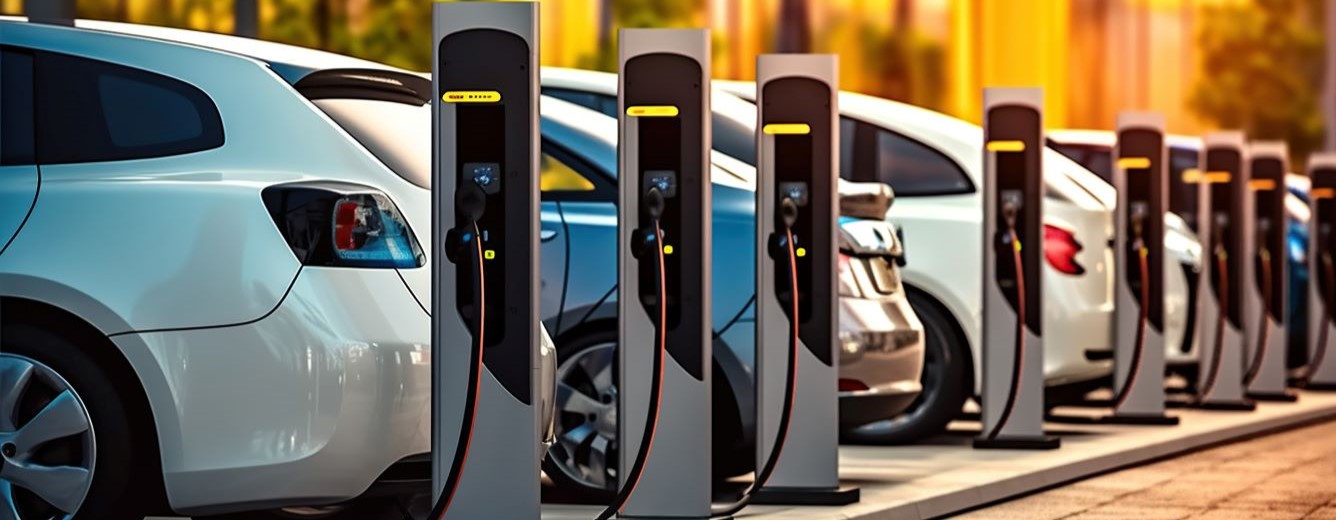President Biden signed the Bipartisan Infrastructure Law which makes the most transformative investment in electric vehicle charging in U.S. history. Under this law, the National Electric Vehicle Infrastructure (NEVI) Program provides $5 billion in funding to States to strategically deploy electric vehicle charging infrastructure and to establish an interconnected network to facilitate data collection, access, and reliability. The goal of this program is to have electric vehicle charging stations along the interstate system every 50 miles.
1. What to know about the 51 Individual National Electric Vehicle Infrastructure (NEVI) Plans?
- Every state and the Territory of Puerto Rico has submitted and received federal approval for their fiscal year 2022/2023 Electric Vehicle Infrastructure Deployment Plans.
- The NEVI program will fund 80% of the cost of the charging infrastructure and the individual states must determine how they will fund the remaining 20%.
- Although the goal is to provide charging stations every 50 miles on the interstate system across the U.S., the goal will not be accomplished quickly or easily.
- Each Infrastructure Deployment Plan is unique in its approach. Many request waivers of the 50-mile requirement and present different approaches for public-private partnerships to fully fund the projects.
2. What environmental regulations will the electric vehicle projects need to follow?
The applicable federal environmental laws and executive orders that apply are:
- National Environmental Policy Act (NEPA)
- National Historic Preservation Act of 1996 (NHPA)
- Endangered Species Act of 1973 (ESA)
- Executive Order 11988, “Floodplain Management”
- Clean Water Act
- Section 4(f) of the USDOT Act of 1966
- Executive Order 12898, “Federal Actions to Address Environmental Justice in Minority Populations and Low-income Populations”
The lead agency for the stations will be the State Department of Transportation for each state. Because the projects will be planned by the states and funded by the federal government, both federal, state and local environmental requirements will apply.
Given the number of stations (every 50 miles), especially for larger states, it may make sense to perform a programmatic NEPA analysis with allowances for dealing with site-specific conditions and associated measures.
3. What are the issues of concern as each state initiates the NEVI Program?
- 20% of the funding for each project must be identified, likely using some form of public-private partnership funding to design, build, own and operate each charging station.
- The location of the charging stations is dependent on the availability of electrical transmission lines. Some states have voiced concerns that their electrical grid may not be able to support the full build-out of the charging stations.
- 19% of Americans live in rural areas but 68% of our lane miles are in rural areas. Many of the western states will find it difficult and uneconomical to build charging stations every 50 miles.
- It has been suggested that existing truck stop locations be expanded and used as charging stations since this will eliminate the need to develop much of the support infrastructure. This will require close cooperation on some type of public-private partnership agreement.
4. How can Scout help?
If you have any questions on the NEVI program in your state, please feel free to reach out to Scout and we can assist you in reviewing the State Electric Vehicle Deployment Plan as well as the other regulations and requirements for implementation of the plans.
If your organization is interested in pursuing a public-private partnership opportunity, Scout is ready to assist with a review of the applicable environmental regulations that will apply to the overall State Electric Vehicle Deployment Plan. By reviewing the location of the proposed charging station in each state, Scout can provide guidance on the environmental requirements for that location. Reach out to us for assistance at hello@scoutenv.com!














